-
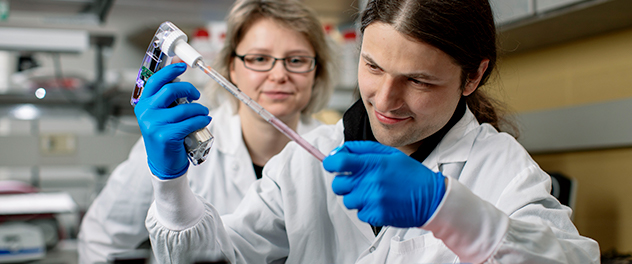
Understanding aging and age-related diseases
Research in Dr. Jurk's Biology of Aging and Age-Related Diseases Laboratory at Mayo Clinic is focused on discovering the links between age-related diseases and developing new strategies to prevent these diseases and increase healthy life span.
-
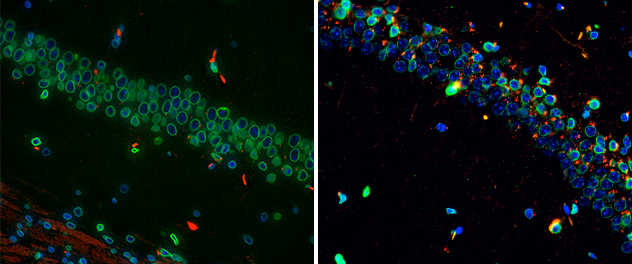
Illuminating cellular changes during aging
Dr. Jurk's lab is using advanced fluorescence microscopy methods to identify changes during aging that can form the basis for new therapies. The image on the left shows lamin B1 staining (green) in a young mouse brain. On the right, the same staining is performed in an old mouse brain (hippocampus).
-
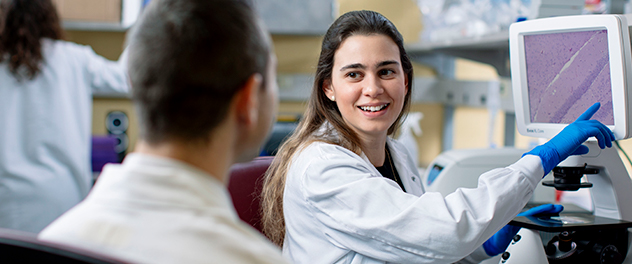
Training next-generation scientists
The Biology of Aging and Age-Related Diseases Laboratory at Mayo Clinic explores aging and age-related disease from molecular and cellular perspectives to gain insights for therapy and prevention in the future.
-
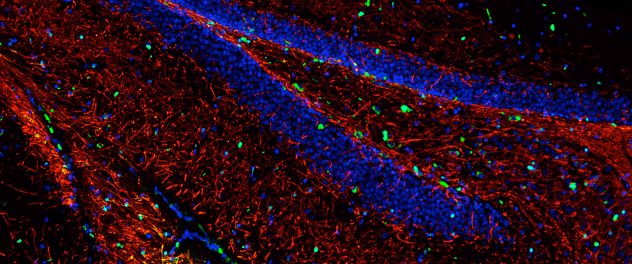
Understanding brain aging
Aging-associated molecular and cellular changes are studied using cell culture models and animal models as well as clinical and pathological samples from people for biomarker and drug discovery.
-
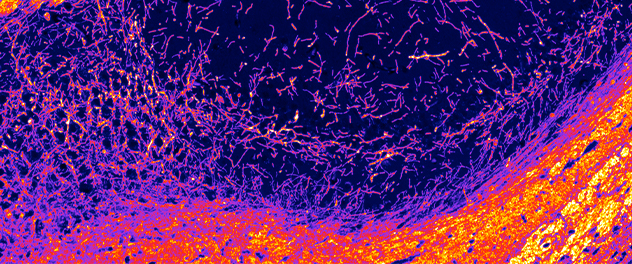
Advancing neurodegenerative disease research
Age is the single biggest risk factor for developing dementia, Alzheimer's disease and Parkinson's disease. Unraveling common characteristics between different neurodegenerative diseases will lead to methods of early detection and might open new venues for treating multiple diseases at once.
Overview
The Biology of Aging and Age-Related Diseases Laboratory led by Diana Jurk, Ph.D., investigates the molecular and cellular mechanisms underlying aging and age-related disorders caused by cellular dysfunction. These studies include age-related neurodegeneration such as dementia and obesity-associated disorders such as nonalcoholic fatty liver disease (NAFLD) and type 2 diabetes.
Human life span is undeniably increasing and, consequently, many will be affected by a variety of age-related diseases called multimorbidities. Age is the single most relevant risk factor for developing neurodegenerative diseases and cognitive decline.
Recent data strongly suggests that cellular senescence is a major driver of aging and age-related pathology. Senescent cells are characterized not only by a cell-cycle arrest, but also by a potent pro-inflammatory phenotype, which is thought to drive aging and age-related diseases. Elimination of senescent cells in mice has been shown to reverse age-related pathology demonstrating that targeting senescent cells can be a powerful strategy to promote healthy aging.
At Mayo Clinic, the Biology of Aging and Age-Related Diseases Laboratory has found that post-mitotic cells, like neurons, show multiple hallmarks of senescence, play a major role in the aging process and contribute to neurological disorders. Dr. Jurk's research team is studying senescence pathway to identify novel key players and drug targets. She and her colleagues are dedicated to using their findings to discover treatments that affect underlying mechanisms of age-related disease.
Research focus areas
The goals of Mayo Clinic's Biology of Aging and Age-Related Diseases Laboratory led by Diana Jurk, Ph.D., are to:
- Dissect and intervene in pathways that drive cellular senescence and aging.
- Prevent and eliminate senescent cells.
- Better understand the mechanisms of multimorbidities.
To accomplish these goals, the research team employs a multidisciplinary, translational approach using novel mouse models as well as clinical and pathological human specimens. The team performs a wide range of molecular, cellular and biochemical techniques as well as implementing state-of-the-art imaging, including unbiased high-content, live cell and super-resolution microscopy. Employing omics (such as metabolomics and lipidomics) and cytometry by time of flight (CyTOF), the laboratory intends to understand the underlying mechanisms driving age-related disorders.
By identifying common disease signatures in age-related diseases, Dr. Jurk and her team hope to contribute to better treatments for people with age-related diseases and multimorbidities in the future.
About Dr. Jurk
Diana Jurk, Ph.D., is an associate professor of physiology with joint appointments in the Department of Physiology and Biomedical Engineering and the Department of Neurology. She is also part of the Robert and Arlene Kogod Center on Aging. Dr. Jurk's primary research focus is on understanding the physiological and molecular mechanisms underlying aging and age-related diseases. Her aim is to identify new biomarkers and develop novel therapeutic strategies to treat age-related disorders.